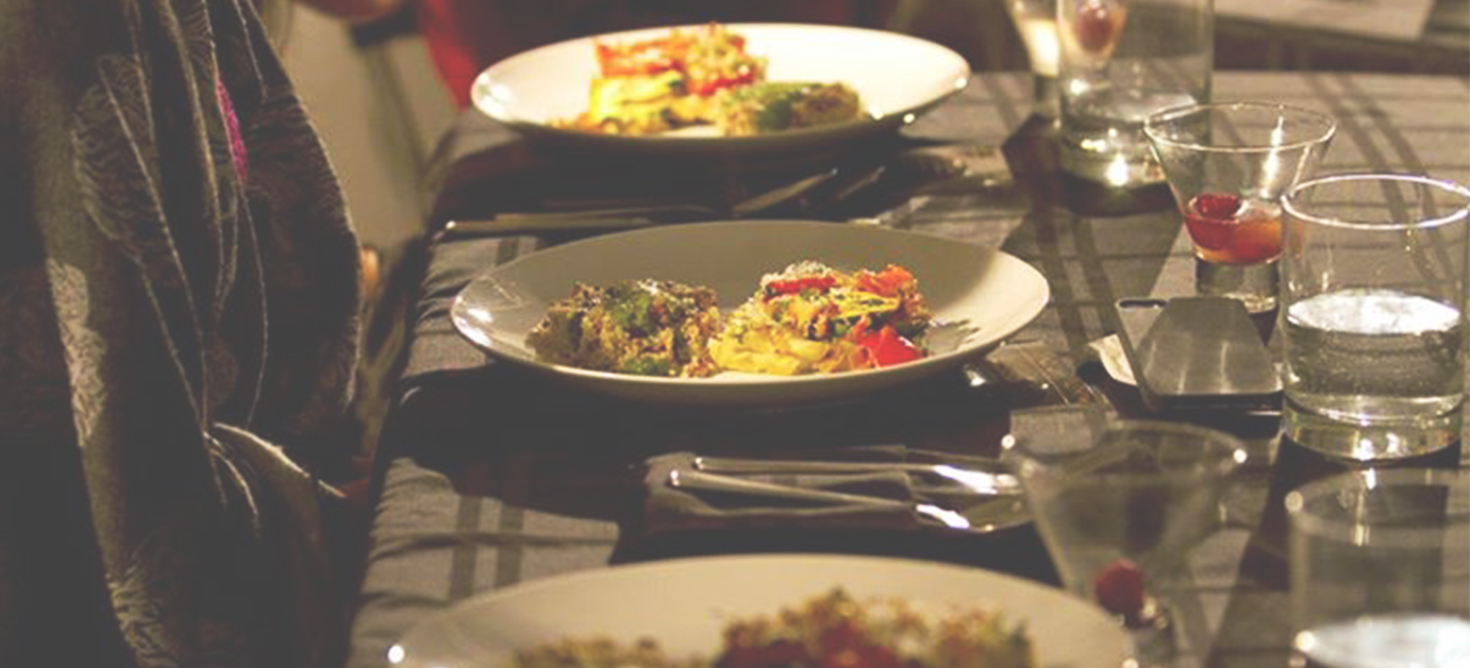In our latest interview, we had the opportunity to catch up with Matthew Brown, high school principal and comic book artist, who schooled us on the finer points of backseat fist fights, artistic inspiration and the value of tenacity.
Name: Matthew Brown
Suitless Pursuit: Comic book artist, Ambient Zero Comics

You're a graphic novelist on the side. What got you into drawing comics?
I was really burned out after architecture school, and didn’t draw for a long time. But then at a routine appointment, my doctor asked me if I still drew comics – something I used to do when I was a lot younger, and I said no. As I walked out of his office, the whole idea for a continuation to a story that I’d begun seven years earlier popped into my head. That night, I decided to start drawing comics again and to try my best to self-publish them. Now I'm making a go of that.
How old were you when you first started drawing comics?
I guess it started in grade six when I started trying to draw the comics I liked – Wolverine, X-Men, and all that. Also, when my siblings and I used to punch each other in the car, my mother would hand us paper and crayons and say, “Draw, draw!” So we can all draw, now. I studied art in high school, and when I moved to Montreal, I was fortunate to have my comics published.

And why did you stop?
By the time I finished my undergraduate degree in theatre in Montreal, I really wanted to get out of Canada and see something completely different. So I traveled to India, where I met people from many walks of life, and didn’t want to pigeon-hole myself as a scruffy, dirty artist anymore. Eventually I became a Buddhist and after a few more trips to India and becoming a teacher, then going back to Art School and then design then architecture, I got sick of the ego and bitterness around me so I dropped out of doing comics. I felt I should dedicate my spare time to meditating. But at this point in my life, I’ve found a way to draw comics, retain my sanity, and make an artistic contribution. Being a principal is very constraining, so comics are a channel for things that I think are funny or whatever ideas about art or meditation I have.
What inspires your stories?
A lot of things. Both my parents are teachers, and they raised me with a lot of strange bedtime stories like Alice in Wonderland, The Phantom Tollbooth and some very odd 1970’s new wave Science Fiction. Those were some of the inputs: very imaginative. When I was about 10, I was fortunate to find alternative comics. And one of the best comic book artists in the world, Chester Brown, was living right in Toronto and was also a huge influence. He was completely unapologetic – taking all the stuff in his head and just putting it down on paper. Self-publishing it, and then he was picked up by a local comics publisher, Vortex.
I was just lucky I had people around me suggesting I read stuff like Robert Crumb, who came out of the LSD culture in the 60s, and is also a big influence. He’s just honest about the things that he’s frustrated about or turned on by. Art Spiegelman was another one. My friend in grade eight saw my drawings and heard my jokes and told me to buy RAW Magazine.Same thing for Moebius, the god of French comic books. I found out about him from a Comics Journal interview with Frank Miller, the guy who reinvented Batman as a fascist sadomasochist in The Dark Knight. His comic before that, Ronin, was a masterpiece. My bible. I found those guys when I was growing up, and was lucky enough to have their comics as examples of how I could express myself.

You said you had your comics published in Montreal. How did you go about it?
In 1991, I was in the last year of high school and wanted to get my comics published. I copied down the addresses of a bunch of alternative comics on the rack at the Beguiling—I didn’t even buy them! And I sent them my stuff. The only one who responded positively was Marc Tessier, the grand-daddy to the local DIY comic scene in Montreal. When he found out that I was coming to Montreal to do an interview for Concordia he invited me to stay at his place, and after my parents talked to him on the phone to make sure that it was safe, I obliged. When he saw my portfolio for Concordia, he was like, “Hey, you should do your own comic,” and all I could think was, “Now? But it’s Friday, and I’m leaving Sunday!” However, there was a photocopy shop around the corner and Marc was insistent. And that’s how my xeroxed mini-comic, Fear Itself, was born.
I owe Marc a lot for believing in me over the years. He has convinced me to see myself as a comic book artist again, after years away from it all.
How often do you draw?
In a typical week, I’ll draw between zero to five hours, depending on how much time I have. In high school, I spent basically five years drawing all the time which is a solid foundation, but for the next few years it tapered off as I pursued theatre and then travel and then teaching. I was living with a friend of mine who had this great crew of friends he’d met from Nova Scotia College of Art and Design in Halifax, who inspired me to go back to university to do art, which led to design and architecture. Every step reinforced my drawing technique and enriched my creative process. Even now I come back to it periodically, but I can tell you that I don’t draw every day. With the current comic I’m working on, I’m putting in around three to four hours a week.

What’s the process behind putting your work down on paper?
When I do a comic, I might have ideas for characters and a few zippy lines of dialogue, so I’ll write them down on a notepad and write out the script as if it were a play. Then, using pencil, I’ll rough it in on 8.5x11 pages divided in half, dividing up the flow of balloons, deciding how many pages it’ll be, and editing.
The idea is that sketching it out at half or quarter the size of the finished work frees you up, and is less intimidating. I got the idea from architecture school, where you have to re-work concepts a many different scales, and from a book of interviews between Frank Miller and Will Eisner, who came into the comic medium in the 1930s and also created the modern graphic novel.
This is something I never used to do in high school, I was just impatient and drew everything directly in ink, on impulse trying to capture a mood. No patience or time for long narratives. Only years of experience made me realized the benefits of using pencil, eraser and rulers! After that, everything gets inked with a pen, brush and ink.
Are you working on something right now?
I’m doing a multi-volume graphic novel called The Cliff, about an exiled mafia prince, a gang of ne’er-do-wells, a portly penguin and the Indian city of Varanasi. Very surreal, lots of black humour. There have been three of these volumes so far, and what I’m currently working on will be book four. Like Act IV of a Shakespeare play, this is going to be the big climax with lots of character development and conflict. There’ll be one more and when these five books are completed, my old publisher from Montreal, Marc Tessier, may possibly publish a collected edition.
I’m now 42 years old, so if I’m ever going to do a full-out narrative as a kind of personal artistic statement, this is going to be it. Unless a millionaire decides to hand me dough for the rest of my life, in which case this will part one in an ongoing series!

Of the works you’ve published or that you’re in the process of publishing, do you have a favourite?
This one [The Cliff]. It’s the best because I tried the hardest, I was the most patient, and I’m taking the time to make a full statement. It has all the inputs of my life so far, like an aged wine or a cheese gone bad.
Between your full-time job and drawing comics, how do you balance the two?
I do what is appropriate when I feel it should be done. I used to be a bit of a workaholic, but I got stressed out.
Are your students aware of your work?
It’s funny. I have Facebook, and I’m friends with a lot of my students. There’s TCAF, the Toronto Comic Arts Festival that goes on every May, and I’ve gone these past few years. Some of my students who care about comics have shown up, and it meant a lot to them personally that I was doing it. It was a nice connection to make, although I had to say to them when I was selling them the comic, “I did not draw this as a principal. Do you understand what that means? There are some bad words in here.”

What advice do you have for anyone who wants to do what you’re doing?
Do it. Go home now, sit down and do it. And if you can’t do it, that’s okay, too. When fans used to ask him how to get good at drawing, Dave Sim, the Canadian genius behind self-published graphic novel magnum opus Cerebus the Aardvark, said, “Sit down and draw 500 pages. By the time you’re on page 501, you will be a good artist. There’s no way you can’t be good after that.” But you have to stay at it.
And then there’s my dad. In the late 90s, I wrote a book and gave the manuscript to him to read. When I got it back he said, “You’re too young to write a novel. You’re too young to know anything about the world! These characters are all cardboard.” So in that regard, I want to encourage people who want to do comics to be as open to life as you can. Listen to everyone, look at everything, let it all in.
***All photos (with the exception of the one at the top, taken by Joe) are property of Matthew Brown and the Ambient Zero Comic Book Blog
Want more comics? Visit the Ambient Zero Comic Book Blog! http://www.ambientzero.blogspot.ca
Check out Ambient Zero on YouTube! It's like comics, but in video form: Ambient Zero's YouTube channel
THE CLIFF, Books 1, 2 and 3 for sale on Lulu.com:
http://www.lulu.com/spotlight/ambient0

